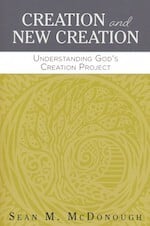Book Club: The Social Animal
Blog / Produced by The High Calling
“This is the happiest story you’ve ever read…”
That first line pulled me in because…I like a happy story. Don’t you? In the introduction of The Social Animal: The Hidden Sources of Love, Character, and Achievement, David Brooks effectively baits the hook.
“…It’s about two people who led wonderfully fulfilling lives,” he says. And: “How did they do it? They possessed what economists call noncognitive skills, which is the catchall category for hidden qualities that can’t be easily counted or measured, but which in real life lead to happiness and fulfillment."
I want happiness and fulfillment. So I start to wonder, how do I go about getting these noncognitive skills?
It’s not that easy. He’s talking about the unconscious mind. And showing the ways the conscious mind can influence the unconscious is one of the goals of this book. Brooks is trying to change the way we think. He wants us to go deeper. To read his thoughts about the unconscious is to step into a passion, but also a mystery.
“…below our awareness there are viewpoints and emotions that help guide us as we wander through our lives. The viewpoints and emotions can leap from friend to friend and lover to lover. The unconscious is not merely a dark, primitive zone of fear and pain. It is also a place where spiritual states arise and dance from soul to soul. It collects the wisdom of the ages. It contains the soul of the species. This book will not try to discern God’s role in all this. But if there is a divine creativity, surely it is active in this inner soulsphere, where brain matter produces emotion, where love rewires the neurons.”
And so it is among these aspirations that Brooks introduces us to Rob and Julia, who will become the parents of Harold—one of the main characters of The Social Animal. For, the charm of this book is that all the little tidbits of research that Brooks is attempting to synthesize will be presented in the context of story.
In chapter one we are treated to the courtship of Rob and Julia, which is peppered with all kinds of fascinating facts, such as that women are sexually attracted to men with larger pupils. And women everywhere prefer men who have symmetrical features and are slightly older, taller, and stronger than they are. We also learn that one study showed that, for men, each inch of height corresponds to $6,000 of annual salary in contemporary America. And this was interesting: People who lose their sense of smell suffer greater emotional deterioration than people who lose their vision. That’s because smell is a powerful way to read emotions. And vision isn’t? Weird.
In the first three chapters we explore how emotions affect decision making, how two people with different mental maps move toward convergence, and how unconscious processes affect the development of relationships.
These noncognitive processes are put in the context of dating, marriage, and early parenting as we move through these stages of relationship with Rob and Julia.
In chapter three, Brooks introduces the theory of mirror neurons—illustrating its principles through the bonding process of mother and infant. Brooks walks us through the early days of Julia’s mothering of Harold, dropping little tidbits of research here and there. The author is building support for the hypothesis that we automatically simulate others, and understand what others feel by feeling a version of what they are experiencing, in ourselves.
Brooks cites brain studies that show that monkeys do not only mimic actions, but they seem to be attributing intent as well. For example, when monkeys see a glass picked up in a way that suggests drinking; their brains fire a different way than when they see the glass being picked up during cleaning. The ways their brains react is dependent on the goal of the action. The theory of mirror neurons posits that we have in our heads neurons that automatically re-create the mental patterns of those around us.
…the theory gives us a vehicle to explain a phenomenon we see every day…Minds are intensely permeable. Loops exist between brains. The same thought and feeling can arise in different minds, with invisible networks filling the space between them.
This theory seems to be foundational in The Social Animal, and I feel Brooks poising us to attempt to permeate those dense layers of the unconscious. So far, The Social Animal has been an interesting read, though the constant intrusion of seemingly unrelated research tidbits can be a bit distracting. We are on our way through those shadowy halls of the human mind and, while Freud would use the vehicle of free association or the like, I am very curious to see what methods Brooks recommends.
What do you think? Leave us a thought in the comment section. We tackle three more chapters next week: Mapmaking, Attachment, and Learning.
Image by Michel Jones. Used with permission. Sourced via Flickr. Post by Laura J. Boggess.





